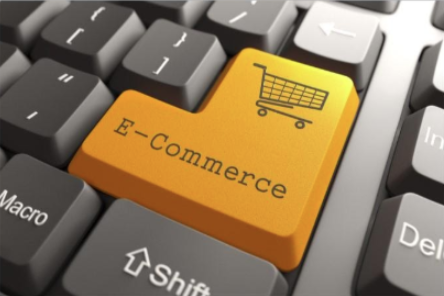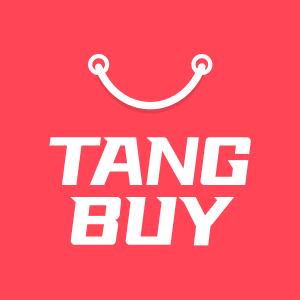How to Source High-Quality Products for Your Dropshipping and E-commerce Store

You want to fill your shop with High-Quality Products, but finding the right ones can feel tough. You might worry about poor reviews or returns if you pick the wrong items. Start by knowing what you want and what quality means for your brand. When you focus on clear standards from the beginning, you make better choices and avoid costly mistakes. Ready to take control? Let’s break it down step by step.
Key Takeaways
Learn about your customers and set clear quality rules first. This helps you not make expensive mistakes when picking products.
Good products use strong materials and do what they say. They also have clear pictures and honest reviews. This helps people trust your shop.
Use tools to study the market and look at real product samples. This helps you find things your customers want and that are popular now.
Pick suppliers with care by checking if they are trusted. Ask for samples and talk clearly with them. This makes sure the products are good.
Work with manufacturers, wholesalers, dropshipping suppliers, or sourcing agents. Choose based on what your business needs and how much control you want.
Check products often and make rules for quality. This keeps your shop’s good name and makes customers happy.
Check how well your suppliers do their job often. Fix problems fast to keep your shop running well and to build good relationships.
Do not use suppliers you cannot trust or who do not talk well. This stops legal trouble, bad reviews, and big mistakes.

High-Quality Products: What and Why
When you run a dropshipping or e-commerce store, you want your customers to trust what you sell. High-Quality Products do more than just look good—they help your business grow and keep shoppers coming back. Let’s look at what makes a product high quality and why it matters for your shop.

Key Features
Materials
You can spot High-Quality Products by the materials used. Strong fabrics, sturdy plastics, and well-finished metals last longer and feel better in your customer’s hands. If you sell clothing, soft and durable fabrics make a big difference. For electronics, you want solid buttons and smooth finishes. Good materials show you care about what you offer.
Functionality
A product should do what it promises. If you sell a phone case, it should protect the phone and fit well. If you offer a kitchen gadget, it should work smoothly and make life easier. You also want to check that the product is easy to use and comes with clear instructions. When you choose items that work as expected, you build trust with your customers.
Tip: Look for clear product photos, honest reviews, and even product videos. These help you and your customers see how the product works in real life.
Here are some features that help define high-quality products in e-commerce:
Helpful product reviews from real buyers
A simple and quick purchase process
Easy-to-use search tools on your site
Product recommendations that match what shoppers like
Hassle-free returns and detailed product comparisons

Business Impact
Customer Satisfaction
When you offer High-Quality Products, your customers notice. They get what they expect, so they feel happy and leave good reviews. This makes new shoppers more likely to buy from you. In traditional e-commerce, you can check the products yourself before selling them. This control helps you keep your standards high and your customers satisfied.
Returns and Reputation
If you sell poor-quality items, you will see more returns and complaints. This can hurt your reputation and make it harder to win new customers. Dropshipping can be tricky because you rely on suppliers for quality and packaging. Sometimes, products arrive in plain boxes, which makes your brand less special. When you focus on quality, you build a strong name and can even earn better profits over time.

Product Selection

Identifying Needs
Before you start looking for products, you need to know what your shop really needs. Think about your target customers. What problems do they face? What do they want to buy? Make a list of the features that matter most to them. For example, if you sell fitness gear, your customers might want items that are durable, easy to use, and stylish. Write down your must-haves and nice-to-haves. This list will help you stay focused when you start searching for suppliers.
Tip: Ask yourself, “Would I buy this?” If you would not, your customers probably will not either.
Market Trends
You want to sell products that people actually want. To do this, you need to keep an eye on what is popular right now. Start by checking out what your competitors are selling. Look at their bestsellers and read customer reviews. You can also use special tools to spot trends and track what is selling well.
Here are some tools that can help you understand the market:
WooCommerce Analytics gives you real-time data about your sales and customer behaviour. You can see which products sell best and when people buy them.
Google Analytics shows you where your visitors come from and what they do on your site. You can spot patterns and see which pages get the most attention.
Metorik helps you track sales trends and customer habits. It also lets you group customers and send them emails.
Product Sales Report Pro creates detailed reports about your products and inventory. You can sort and share these reports easily.
MonsterInsights connects Google Analytics to your shop. You get a simple dashboard with all your key numbers, like sales and conversion rates.
You do not need to use every tool. Pick one or two that fit your shop and learn how to use them well.
Product Examples
Now you have your needs and you know what is trending. Next, look for real examples of products you want to sell. Search for items that match your list. Check their reviews, photos, and even videos. If you can, order a sample for yourself. This helps you see the quality and decide if it fits your shop.
Product Type | What to Check | Where to Find Examples |
|---|---|---|
Fitness Bands | Material, stretch, comfort | Amazon, AliExpress |
Kitchen Gadgets | Ease of use, safety | eBay, supplier catalogues |
Phone Accessories | Fit, durability, design | Shopify stores, Etsy |
Note: Reviewing real products helps you avoid surprises and keeps your customers happy.
Sourcing Methods
Manufacturers
If you want to control your products, work with manufacturers. You can make new items or change old ones for your brand. This is good if you have a special idea or want to be different. Manufacturers give the best prices when you buy a lot at once. You can choose your own quality rules and check samples first.
But you must buy bigger amounts from manufacturers. You may need to handle shipping, storage, and customs forms. This can be hard if you are new. Still, if you want a strong brand and special products, manufacturers give you the most choice.
Tip: Always get product samples before a big order. This helps you find problems early.

Wholesalers
Wholesalers are between manufacturers and shops like yours. They buy lots of products and sell them in smaller groups. This helps you get many products without spending too much at first. You can try different things and see what sells best.
Wholesalers care about product quality. Here is what they do:
They check products and set rules for materials, boxes, and labels.
They inspect at the factory and before shipping.
They use lists and checks to watch every step.
They test small batches to find problems early.
Some use digital tools to spot issues fast.
They follow industry rules and safety laws.
If there is a problem, they fix things like bad smells or broken parts.
They have recall plans and try to stop future problems.
You can feel safe because wholesalers work hard to give good products. This lets you focus on selling and growing your shop.
Dropshipping Suppliers
Dropshipping suppliers help you sell online without keeping stock. You show their products in your shop. When someone buys, the supplier sends it to your customer. You do not need to store or ship anything.
Dropshipping is good if you want to try new products or lower your risk. You can add or remove items quickly and follow new trends. Many dropshipping suppliers use apps to connect with your shop, so orders go through by themselves.
But you have less control over quality and shipping speed. Always read supplier reviews and order samples for yourself. Talking often with your supplier helps you avoid problems and keeps your customers happy.

Directories and Marketplaces
Directories and marketplaces help you find suppliers worldwide. These sites gather many sellers in one place. You can look at products, prices, and reviews together. This saves you time and helps you spot good deals fast.
Here is a table to help you pick the best platform:
Platform | Trust Indicators & Strengths | Best For | Key Features & Notes |
|---|---|---|---|
Tangbuy | Suppliers checked carefully, Warehouse inspection system | High-quality and low-priced factory supplies, free warehousing, multiple routes | Factory prices without intermediaries, minimum purchase of one piece, no membership fee, free quality inspection, photography and storage services |
Alibaba | Supplier certificates, trade assurance, many suppliers | Buyers wanting lots of choices and low prices | Big marketplace, buyer protection, checks on suppliers |
SaleHoo | Checked suppliers, helpful support, research tools | New sellers and Shopify dropshippers | Over 8,000 suppliers, training, support, mostly US brands |
Wholesale Central | Suppliers checked, removed if not reliable | Buyers wanting niche or closeout goods | Directory only, no buying on site, partner for closeout deals |
DHgate | Buyer protection, review system built in | Buyers needing small orders | No membership fee, flexible shipping, watch out for fake goods |
DollarDays | Trusted by nonprofits | Nonprofit groups | Bulk supplier for nonprofits |
Tropical Labs | Focus on private label personal care | Buyers wanting personal care products | Niche for personal care |
Tasha Apparel | Focus on women’s fashion shops | Fashion shop owners | Specialises in women’s clothes |
Syncee | Dropshipping platform | Dropshippers | Works with e-commerce platforms |
Faire | Personalised product picks | Buyers wanting special selections | Focus on personalised sourcing |
Tip: Always read supplier reviews and use platforms with buyer protection. This helps you stay safe from scams and bad products.
You can also use dropshipping apps and sourcing tools. These connect your shop to suppliers and make orders easier to manage.
Trade Shows
Trade shows let you meet suppliers face-to-face. You can see and touch products before you buy them. This helps you check quality and ask questions right away.
You meet suppliers and manufacturers in person.
You can check products and see if they are good.
You build strong links with suppliers.
Make a list of what you want before you go.
Talk to new contacts after the show to keep in touch.
Big shows like the Atlanta Gift Show and Las Vegas Market have many suppliers.
Meeting in person often works better than just searching online.
Stay in touch after the show to build trust.
Note: Trade shows can be busy, so plan your visit and take notes. This helps you remember which suppliers you liked.

Sourcing Agents
Sourcing agents help you find good suppliers in other countries. They know the local market and have trusted contacts. You can trust them to find the best products and check quality before shipping.
Sourcing agents know many good suppliers and can find the best ones.
They check product quality and make sure it meets your needs.
They talk about prices, so you get good deals.
Some platforms, like Zendrop, do extra checks at warehouses and link you to checked manufacturers.
Sourcing agents help with orders and shipping, so your products arrive on time.
They protect your brand by stopping bad shipments and keeping customers happy.
Tip: If you feel worried about working with overseas suppliers, a sourcing agent can make things much easier and safer.


Supplier Research and Vetting
Finding Suppliers
You want suppliers who always give High-Quality Products. Stay away from risky sites like AliExpress and others like it. These sites often have fake goods and broken items. They also do not help much if there is a problem. Try to use trusted platforms that control their supply chain. These platforms check product quality. Tangbuy is one good choice. They link you to checked manufacturers and do quality checks.
Follow these steps when looking for suppliers:
Write down what you need. Think about your product’s features and your target customers. Also, think about what is popular now.
Look for real product examples. Use online platforms or supplier directories. You can also visit trade shows to see products.
Ask several manufacturers for quotes. This helps you compare prices and find the best deal.
Always ask for samples before you sell a product. Samples let you check the quality yourself.
Some platforms, like Zendrop, give extra services. These include custom branding, fulfilment, and account managers. These extras make your business stronger and help it grow.
Tip: Be careful with private sourcing agents. Sometimes they do not have enough checks. This can make things harder for you.

Checking Reputation
You must know if a supplier is trustworthy before working with them. Look at key performance indicators, or KPIs, to judge their reputation. Here are some important ones:
On-time delivery rate – Shows if the supplier delivers on time.
Defect rate – Tells you how many products have problems.
Compliance rate – Checks if the supplier follows rules and contracts.
Cost savings – Shows if the supplier helps you save money.
Supplier risk score – Warns you about risks like money or political issues.
Supplier responsiveness – Measures how fast they answer your questions.
Lead times – Tells you how long it takes to get your order.
Innovation – Shows if the supplier brings new ideas.
Customer service – Tells you how well they handle support.
You can use vendor scorecards to track these KPIs over time. Some businesses use supplier performance tools, like Graphite Connect. These tools give real-time updates and detailed reports. They help you spot problems early and keep your supply chain strong.
Note: Always check reviews and ratings on trusted sites. Good suppliers have happy customers and reliable service.

Communication
Good communication keeps your business running well. Set up clear ways to talk with your suppliers. Use email for formal messages. Messaging apps like WhatsApp or WeChat are good for quick updates. Some businesses use Slack or supplier portals for fast chats.
Here are some best ways to talk with suppliers:
Set clear goals and targets. Put these in your contracts. Add penalties if targets are not met.
Build long-term partnerships. Trust and shared goals make suppliers more reliable.
Offer long-term contracts or promise to buy in bulk. This gives suppliers stability and makes them care more about your orders.
Focus on your most important suppliers. Spend extra time building strong relationships with them.
Work together on cost-saving ideas or new products. This helps both you and your supplier grow.
Tip: Keep your messages simple and clear. Always follow up if you do not get a reply. Clear communication helps you avoid mistakes and keeps everyone working together.
Requesting Samples
You want to make sure your shop only sells High-Quality Products. The best way to do this is by asking your supplier for product samples before you place a big order. This step helps you spot any problems early and gives you peace of mind.
When you request samples, structure your message clearly. Here’s a simple way to do it:
Start by explaining why you need the sample. Tell the supplier you want to check quality before making a decision.
List the exact features or standards you expect. You might ask for details like certifications, safety data, or proof the product meets certain rules.
Attach a checklist or a short questionnaire. This makes it easy for the supplier to answer your questions without missing anything.
Set a clear deadline for when you need the sample. This keeps things moving and shows you are serious.
Be open about your goals. Let the supplier know that a good sample could lead to a bigger order and a long-term partnership.
Tip: Suppliers respond better when they see you are organised and fair. If you use a sample checklist, you help them understand exactly what you want.
Some big companies, like Honda, use regular supplier report cards. These break down quality, delivery, and any problems. You can use a simple version for your own shop. This helps you keep track of which suppliers send the best samples.
Assessing Samples
Once you receive your samples, it’s time to put them to the test. You want to check every detail to make sure the product matches your standards. Here’s how you can do it:
Check the size and shape. Does it match what you ordered?
Look at the materials. Are they strong and safe? Do they feel right?
Inspect the surface. Is it smooth, clean, and free from marks?
Test how it works. Try it out as your customer would. Does it do the job well?
See if it meets industry rules or has the right certificates.
Think about how long it will last. Try bending, stretching, or using it a few times.
Look at the packaging. Did it arrive in good condition?
You can use a table like this to keep track:
Checkpoint | Pass/Fail | Notes |
|---|---|---|
Size and shape | ||
Material quality | ||
Surface finish | ||
Functionality | ||
Compliance | ||
Durability | ||
Packaging |
Note: If you find any problems, talk to your supplier right away. Good suppliers will want to fix issues and work with you to improve.
By taking these steps, you lower your risk and avoid surprises in your bulk orders. You also get a chance to fine-tune the product or ask for changes before you commit. This careful approach helps you build a shop known for High-Quality Products and happy customers.
Quality Control

Quality control is your safety net. It helps you keep your shop’s reputation strong and your customers happy. If you want to sell High-Quality Products, you need to set clear standards, check your products before shipping, and keep testing them over time. Let’s break down how you can do this.
Setting Standards
You need to decide what “quality” means for your shop. Start by writing down what you expect from every product. Make your standards clear and easy to measure. Here’s a simple way to set up your quality rules:
List what matters most—like product descriptions, photos, prices, stock levels, customer service, and how well things work.
Share these rules with your team. Make sure everyone understands what you want.
Give your team training and support. Use guides, videos, or short courses to help them meet your standards.
Use tools that help you track and report on quality. These can automate tasks like listing products or checking inventory.
Ask your customers for feedback. Use surveys or reviews to see what they think and improve your standards.
Tip: When you create a culture that values quality, your team will work harder to keep your shop’s standards high.
Inspections
You can’t always trust that every product will be perfect. That’s why inspections matter. You can use your own checks or hire a third-party service. Here’s how inspections usually work:
Inspectors check raw materials and factory readiness before production starts.
During production, they watch for problems and make sure everything stays on track.
At the end, they test random samples. They look at how the product works, its packaging, and if it matches your standards.
You get a detailed report with photos and results, usually within two days.
If there’s a problem, inspectors can go back and check again after fixes.
These checks help you spot defects early. They also protect your brand and keep your customers satisfied.

Ongoing Checks
Quality control doesn’t stop after one inspection. You need to keep testing your products and collecting feedback. Try these steps:
Test new batches of products before you add them to your shop.
Use customer reviews and returns to spot problems quickly.
Update your quality checklist as you learn more about what works and what doesn’t.
Work with your suppliers to fix issues and improve over time.
Note: Regular checks help you catch small problems before they turn into big ones.
By following these steps, you make sure your shop always offers High-Quality Products. Your customers will notice the difference and keep coming back.
Supplier Management

Performance Reviews
You want your suppliers to help your business grow. To do this, you need to check how well they perform. Regular reviews help you spot problems early and keep your shop running smoothly. You do not have to make this process complicated. Just focus on the things that matter most to your customers.
Here are some simple ways to review your suppliers:
Track late shipments. If your supplier often sends orders late, your customers will notice.
Watch defect rates. Products with faults can lead to returns and unhappy shoppers.
Listen to customer feedback. Reviews and messages from buyers tell you a lot about your supplier’s quality.
Check fulfilment and shipping times. Fast delivery keeps your customers happy.
Look at order accuracy. Make sure your supplier sends the right items every time.
Monitor refund and return rates. High numbers here can mean a problem with quality or service.
Use automated tools or dashboards. These help you see all your supplier data in one place and make better decisions.
You can set up a simple scorecard for each supplier. Give them a score for each area and review it every month. This helps you see who is doing well and who needs to improve. If you notice a problem, talk to your supplier and work together to fix it.
Tip: Keep a backup supplier ready. If your main supplier cannot deliver, you can switch quickly and avoid delays.
Handling Issues
Problems can happen, even with the best suppliers. The way you handle these issues can make a big difference to your business. Stay calm and act quickly when something goes wrong.
First, talk to your supplier as soon as you spot a problem. Be clear about what went wrong and what you expect them to do. Use photos or order numbers to show the issue. Most suppliers want to help you fix things.
If the problem keeps happening, you might need to look for a new supplier. Do not wait too long to make a change. Your customers trust you to deliver good products and service.
Here are a few steps to handle supplier issues:
Gather all the facts. Check your records and customer feedback.
Contact your supplier with clear details.
Agree on a solution, such as a replacement or refund.
Follow up to make sure the problem does not happen again.
Update your performance review to track any changes.
Note: Good communication and quick action can turn a problem into a chance to build a stronger partnership.

Scaling Up
When your shop starts to grow, you need to think about scaling up your supplier relationships. This means you want to handle more orders, add new products, and reach more customers without losing control. Scaling up can feel exciting, but it also brings new challenges. You need to plan ahead so you do not get overwhelmed.
Start by looking at your current suppliers. Can they handle bigger orders? Some suppliers work well with small shops but struggle when you need more stock. Ask them about their maximum capacity. Find out if they can deliver faster or offer better prices for larger orders. If they cannot keep up, you might need to add new suppliers to your list.
Tip: Always keep a backup supplier ready. If your main supplier runs out of stock, your backup can save the day.
You can use a simple table to track which suppliers are ready to scale:
Supplier Name | Max Order Size | Lead Time | Backup Ready? |
|---|---|---|---|
Supplier A | 1,000 units | 7 days | Yes |
Supplier B | 500 units | 10 days | No |
Supplier C | 2,000 units | 5 days | Yes |
As you grow, you might want to automate some tasks. Many shops use order management software. These tools help you track stock, send orders to suppliers, and update your customers. Automation saves you time and helps you avoid mistakes.
Think about your product range. Do you want to add new items? If yes, test new products in small batches first. This way, you can see what sells before you invest more money. Ask your suppliers if they can help you source new products or offer samples.
Scaling up also means you need to watch your quality. More orders can lead to more mistakes if you are not careful. Keep checking your products and listen to customer feedback. If you spot problems, fix them quickly.
Note: Growing your shop is a journey. Take small steps, learn from each stage, and always keep your customers happy.
When you plan well and work closely with your suppliers, you can scale up smoothly. Your shop will grow stronger, and you will feel more confident handling bigger challenges.
Pitfalls to Avoid

Unverified Suppliers
It can be tempting to choose any supplier with a low price. But this is risky for your dropshipping or e-commerce shop. You need to make sure every product is safe, legal, and real.
If you do not check your suppliers, you could have these problems:
You might sell fake or copycat products. This can get you into legal trouble or even court.
Fake goods break trademark and copyright rules. You could get in trouble for selling things that copy another brand.
Some suppliers offer banned or restricted items, like some electronics or medicines. Selling these without the right licence can cause big legal problems.
A product that is legal in one country might be banned in another. You must check import rules and trade laws before selling anything.
Sometimes, suppliers use protected images or logos in their adverts. If you use these by mistake, you could break intellectual property rules.
Bad suppliers can make customers unhappy, give you bad reviews, or even cause lawsuits.
Tip: Always check your suppliers before adding their products to your shop. This keeps your business and your reputation safe.
When you use trusted suppliers, you know you are selling High-Quality Products. You also avoid legal problems and keep your customers happy.
Poor Communication
Poor communication with your suppliers can cause big problems for your dropshipping or e-commerce shop. If you do not talk clearly, you might get the wrong products, face late deliveries, or even lose money. You want your business to run smoothly, so you need to keep your messages simple and direct.
When you work with suppliers from other countries, language barriers can make things harder. Sometimes, your supplier might not understand your requests. Other times, you might miss important details in their replies. If you do not check, small mistakes can turn into big headaches.
Here are some signs that poor communication is hurting your business:
You get products that do not match your order.
Your supplier takes too long to reply to your questions.
You feel confused about shipping times or prices.
You cannot solve problems quickly when something goes wrong.
Tip: Always ask for written confirmation of every agreement. This helps you avoid confusion later.
You can avoid these problems by setting clear rules for how you talk with your suppliers. Try these steps:
Choose one main way to communicate, like email or a messaging app. Stick to it so nothing gets lost.
Write short, clear messages. Use simple words and avoid slang.
Ask your supplier to repeat your requests in their own words. This checks if they understand.
Keep records of every chat, order, and agreement. Save emails and screenshots in a folder.
Set deadlines for replies. For example, ask your supplier to answer within 24 hours.
Use checklists when you place orders. This makes sure you do not forget anything.
A table can help you track your communication:
Task | Who is Responsible | Deadline | Status |
|---|---|---|---|
Confirm order specs | You | 10 May | Done |
Send sample photos | Supplier | 12 May | Waiting |
Approve shipment | You | 14 May | Not started |
If you keep your communication clear and organised, you will spot problems early. Your supplier will know what you expect. You will save time and avoid costly mistakes.
Note: Good communication builds trust. When you and your supplier understand each other, you can work together for a long time.
You now know how to find High-Quality Products for your shop. Start by knowing what your customers want. Use the right tools and check your suppliers. Keep an eye on quality and talk with your partners often. When you focus on quality, your business grows stronger.
Ready to build a shop people trust? Take action today and put these steps into practice!
FAQ
How do you spot a reliable supplier?
You can check reviews, ask for samples, and look for certificates. Reliable suppliers answer your questions quickly. They share clear product details and offer buyer protection. Trust your gut—if something feels off, move on.
What should you do if a product sample is poor quality?
Tell your supplier what you found. Use photos to show the problem. Ask if they can fix it or send a better sample. If they cannot help, try another supplier.
Can you change suppliers after you start selling?
Yes, you can switch suppliers. Keep a backup ready. Test new suppliers with small orders first. Let your customers know if delivery times change.
How often should you check product quality?
Check every new batch. Read customer reviews often. If you see more returns or complaints, test the products again. Regular checks help you catch problems early.
What is the best way to communicate with suppliers?
Use email for important details. Try messaging apps for quick chats. Always keep records of your talks. Clear messages help you avoid mistakes.
Do you need to visit trade shows to find good products?
You do not have to visit trade shows, but they help. You can see products in person and meet suppliers. Online directories and sourcing agents also work well.
How can you avoid selling fake or banned products?
Always check supplier certificates and product details. Use trusted platforms. Search for product bans in your country. If you feel unsure, ask an expert before you sell.

TangBuy: A Smarter Way to Dropship in 2025
If you're looking to stay competitive with dropshipping in 2025, speed and trend-awareness are key. TangBuy helps you stay ahead with real-time product trends, fast fulfilment, and factory-direct sourcing. With over 1 million ready-to-ship items, 24-hour order processing, and seamless Shopify integration, TangBuy makes it easier to test, scale, and succeed in today's fast-moving eCommerce landscape.

